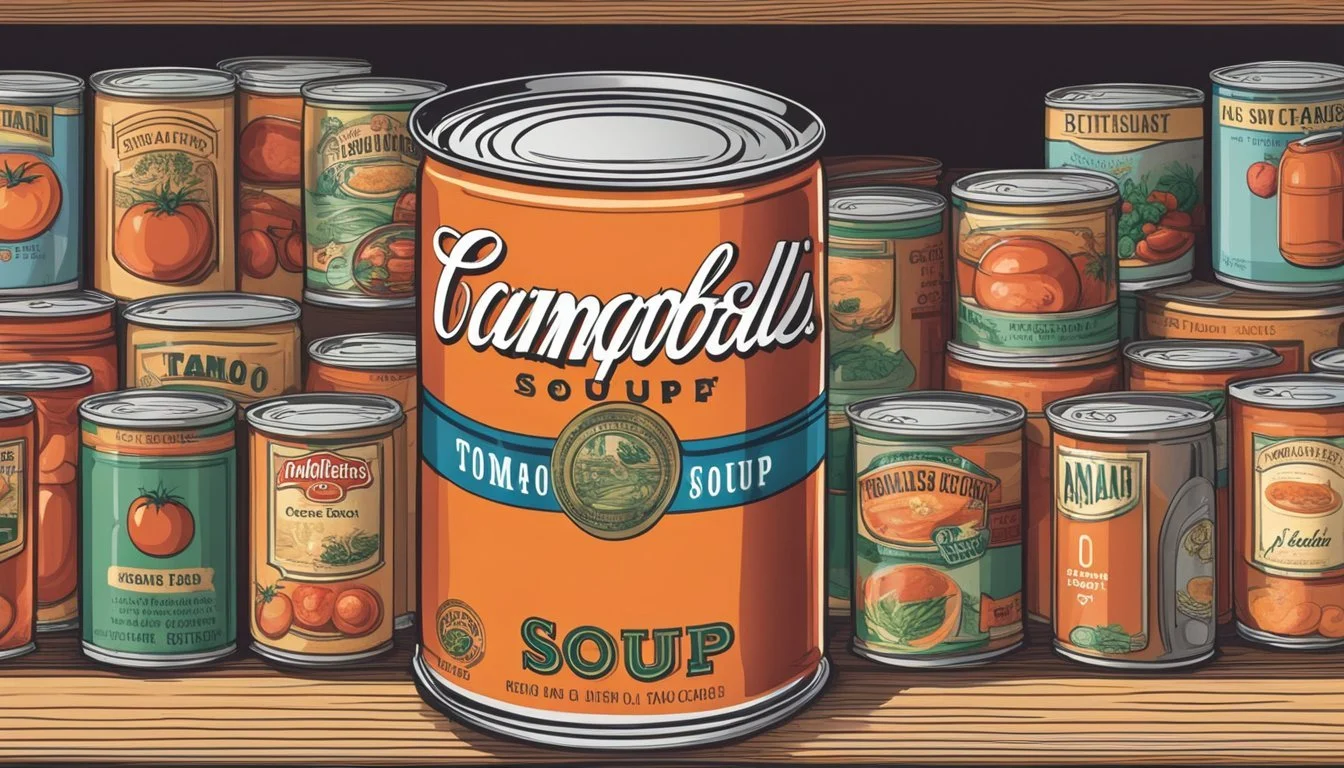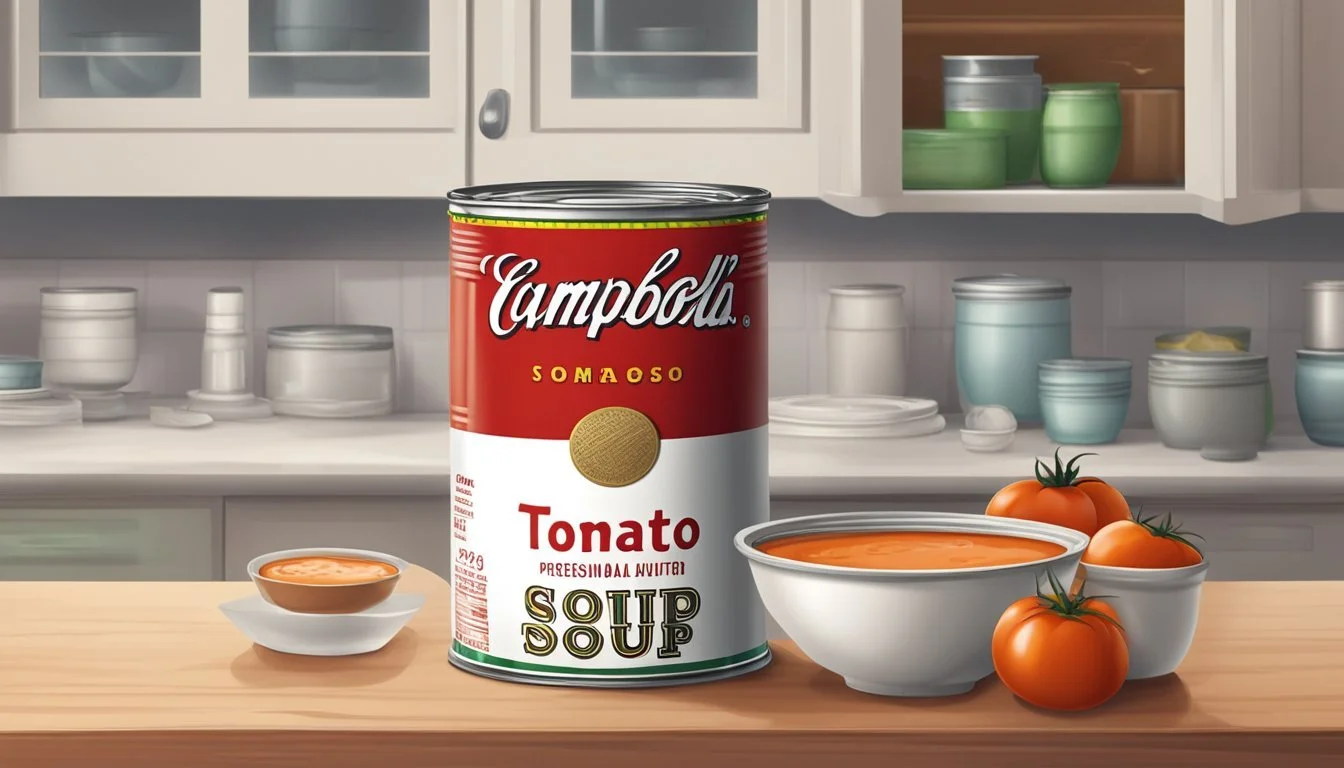Does Canned Tomato Soup Go Bad?
Shelf Life and Storage Tips
Canned tomato soup, like many preserved foods, can offer a convenient and long-lasting meal option. While canned tomato soup can remain safe to consume for up to 18 to 24 months when stored properly, its quality in terms of flavor and texture may decline over time. Unopened cans should be kept in a cool, dry place to maximize their shelf life.
In terms of food safety, visible signs of spoilage in canned tomato soup should always be taken seriously. If a can is dented, bulging, leaking, or if the soup has an unpleasant odor, strange texture, or altered color, it should be discarded immediately, as these are indicators of contamination.
Understanding the shelf life and potential signs of spoilage ensures not only the enjoyment of the dish but also safeguards one's health. Knowing when canned tomato soup is no longer good to eat empowers consumers to make informed decisions about their pantry staples.
Understanding Canned Tomato Soup
Canned tomato soup is a staple in many households, valued for its long shelf life and convenient storage. This section explores the components that make up canned tomato soup, how to interpret labeling, and key signs to determine its freshness.
Composition and Preservation
Canned tomato soup typically consists of tomatoes, water, seasonings, and various preservatives. The high acidity of tomatoes naturally aids in preservation, but additional preservatives are often included to extend shelf life.
The canning process involves sealing the soup in an airtight container, then heating it to a high temperature to kill any bacteria. This method is effective in ensuring the soup remains safe for consumption over long periods. Key preservatives included are often sodium benzoate and citric acid, which help maintain the soup's flavor and color.
Labeling Explained
Labels on canned tomato soup provide vital information about its shelf life and expiration date. The date printed on the can is usually a "best by" date, which indicates the period during which the manufacturer believes the soup will retain its best flavor and texture.
Understanding the difference between "best by" and expiration dates is crucial. While an expiration date indicates the last day the product should be consumed, a "best by" date suggests optimal quality rather than safety. Canned tomato soup often remains consumable well past this date if stored properly.
Key Indicators of Freshness
Checking the condition of the can and the contents inside is essential to ensure the soup is still good to eat. Look for signs such as dented or bulging cans, which could indicate contamination. An unchecked seal might allow bacteria into the can.
Upon opening, the soup’s odor and appearance should be inspected. If the soup emits an unpleasant or sour smell, it’s a strong indicator that it has spoiled. Additionally, any changes in color or texture, such as chunks or mold, suggest that the soup is no longer safe to eat. Always discard cans showing any of these signs to avoid potential health risks.
Safe Storage Practices
Canned tomato soup can last a long time if stored correctly. Key practices include keeping it in a cool, dry place, and applying specific measures once it has been opened or if freezing it for later use.
Proper Storage Conditions
Unopened canned tomato soup should be stored at a consistent temperature, ideally between 50-70°F (10-21°C).
Humidity levels should be kept low to prevent rusting of cans. It's advisable to store cans in a pantry or cupboard away from direct sunlight and any heat sources.
Inspect Cans Regularly: Check for dents, bulges, or leaks. Damaged cans may indicate compromised food safety.
Note: Cans usually have a "best-by" date which ensures peak flavor and texture, though the soup may remain safe beyond this date if stored properly.
Refrigerating Opened Cans
Once opened, tomato soup should be transferred from the can to an airtight container.
Refrigerate Promptly: Place the container in the refrigerator within two hours to prevent bacterial growth. The temperature should be kept below 40°F (4°C).
Usage Window: Opened tomato soup can last for 3-4 days in the refrigerator. Ensure it is reheated to at least 165°F (74°C) before consuming.
Avoid Metal Tasting: Storing soup in a can after opening can impart a metallic taste, which is another reason for switching to an airtight container.
Freezing for Extended Shelf Life
To prolong the life of canned tomato soup, consider freezing it.
Cool Soup Before Freezing: Let the soup cool to room temperature before moving it to the freezer to avoid raising the freezer’s internal temperature.
Use Freezer Bags or Containers: Pour the soup into freezer-safe bags or containers, removing as much air as possible to prevent freezer burn.
Label and Date: Clearly label the containers with the date of freezing. This practice helps in using the older stock first and keeping track of storage duration.
Thawing and Reheating: Thaw frozen soup in the refrigerator overnight and reheat it in a pot over medium heat until it reaches a safe temperature of at least 165°F (74°C). This ensures both safety and quality.
Identifying Spoilage
When assessing canned tomato soup for spoilage, it is crucial to consider visual, olfactory, texture, and taste indicators. These signs help ensure food safety and prevent consumption of harmful products.
Visual and Olfactory Signs
Spoiled canned tomato soup can exhibit several visual cues. Dented or bulging cans are significant red flags as they may indicate bacterial growth or contamination. Mold growth on the surface of the soup is another clear indicator that the product has gone bad.
Unpleasant odors, such as sour or off smells, suggest spoilage. If the soup smells rancid or unusually pungent, it should be discarded immediately. Color changes in the soup, such as darkening or unusual hues, also signal that the soup may no longer be safe to eat.
Texture and Taste Assessment
Texture changes are critical in identifying spoilage. If the soup appears chunky or has an abnormal consistency, it is likely spoiled. A slimy texture can indicate bacterial growth and should lead to immediate disposal.
Before tasting, ensure the soup passes visual and olfactory tests. If the soup tastes sour, bitter, or unlike its typical flavor, it is a sign of spoilage. Never consume soup that tastes off, as it may contain harmful bacteria.
Risks Associated with Spoiled Soup
Consuming spoiled tomato soup poses various health risks. Botulism, a severe form of food poisoning, can result from consuming contaminated canned goods, especially if the can is damaged. Spoiled soup can harbor harmful bacteria such as Clostridium botulinum, leading to serious health issues.
Other bacteria present in spoiled soup can cause gastrointestinal distress, including nausea, vomiting, and diarrhea. Always discard any soup that shows signs of spoilage to prevent these health risks.
Maximizing Soup Enjoyment
Maximizing the enjoyment of canned tomato soup revolves around ensuring peak quality and discovering creative ways to use leftovers. Both taste and preparation play significant roles in the best dining experience.
Ensuring Peak Quality
To enjoy canned tomato soup at its peak quality, it's essential to store it correctly and recognize signs of spoilage. Unopened cans should be stored in a cool, dry place and consumed before the "best-by" date for optimal flavor and texture.
When reheating, use proper techniques to maintain food quality. Avoid boiling the soup; instead, warm it gently over low to medium heat to preserve its taste and consistency. Fresh herbs or a splash of cream can elevate the flavor to mimic fresh tomato soup.
Watch for signs of spoilage: Any unpleasant odors, off colors, or unusual textures indicate that the soup may have gone bad. Dented, bulging, or leaking cans should be discarded immediately to avoid health risks.
Creative Uses for Leftover Soup
Leftover canned tomato soup can be transformed into diverse and delicious dishes. Use it as a base for other foods, like a tomato sauce for pasta or a comforting base for a stew, by adding proteins and vegetables.
Enhance the flavor by incorporating spices like cumin or paprika. Stir-ins such as beans, rice, or lentils can turn leftover soup into a hearty meal. Add texture with toasted nuts or a drizzle of flavored oils for a gourmet touch.
Versatile in recipes, leftover soup can even be used in casseroles or as a flavorful cooking liquid for grains. These ideas help reduce waste while enhancing the overall enjoyment of your canned tomato soup.






